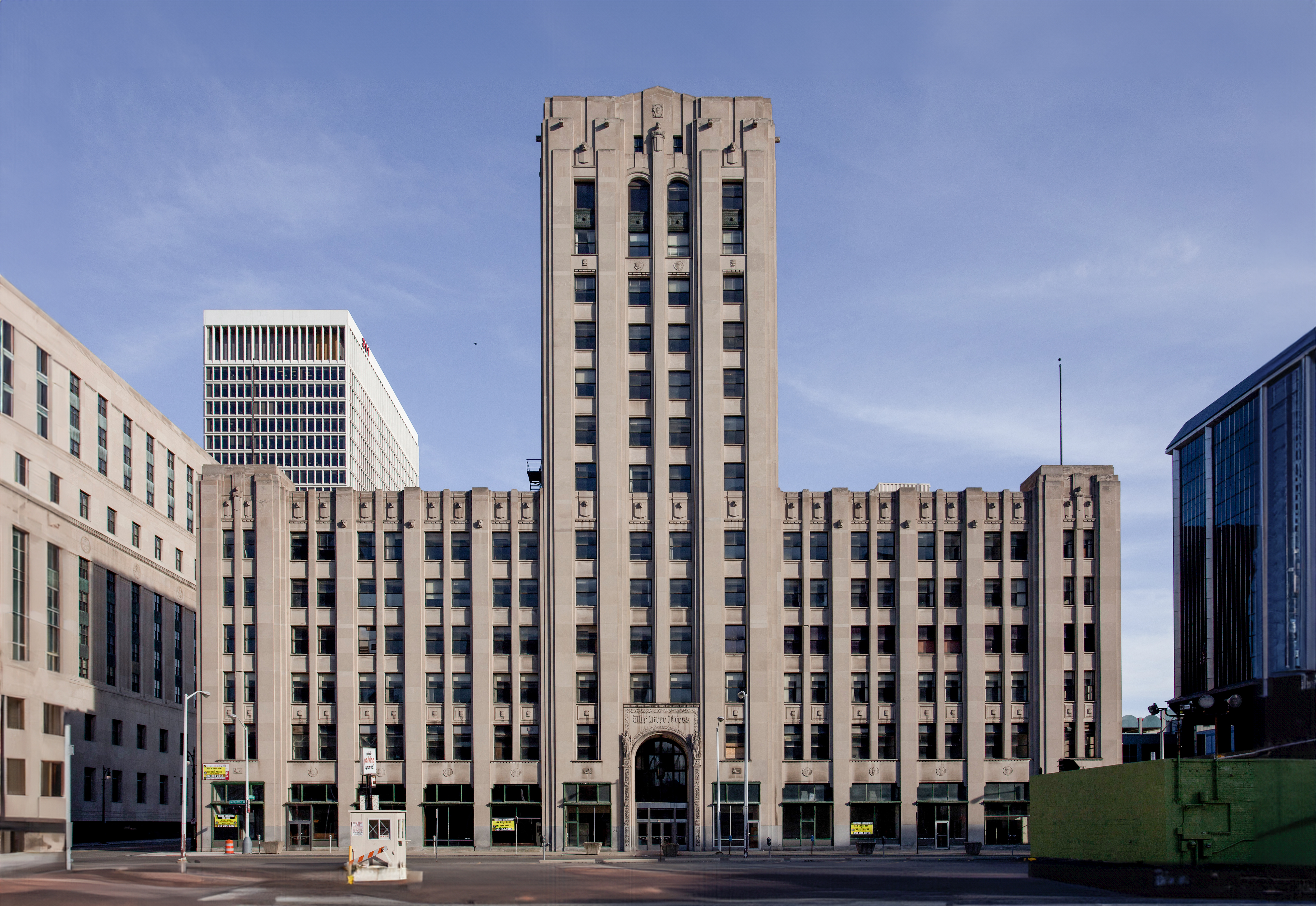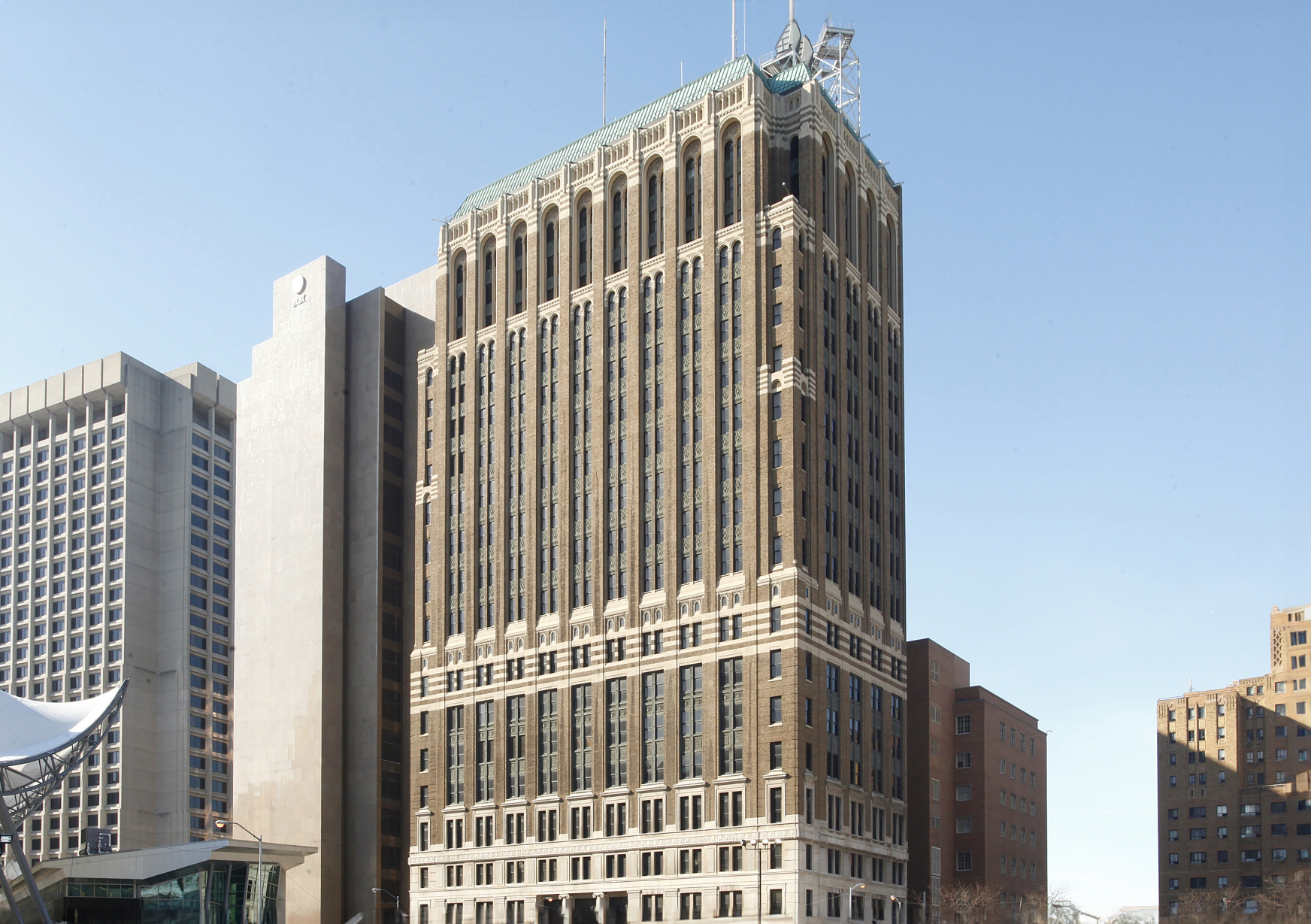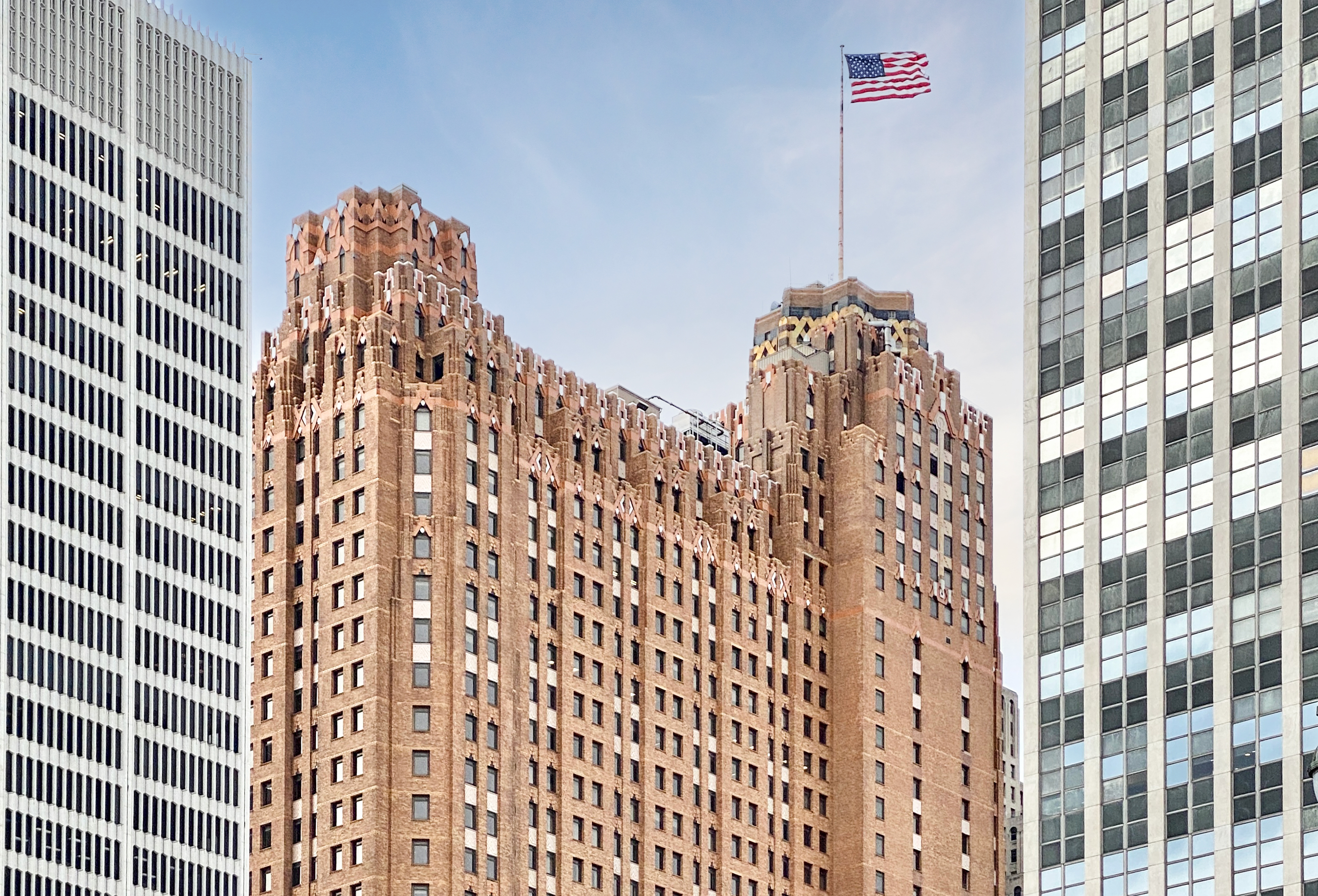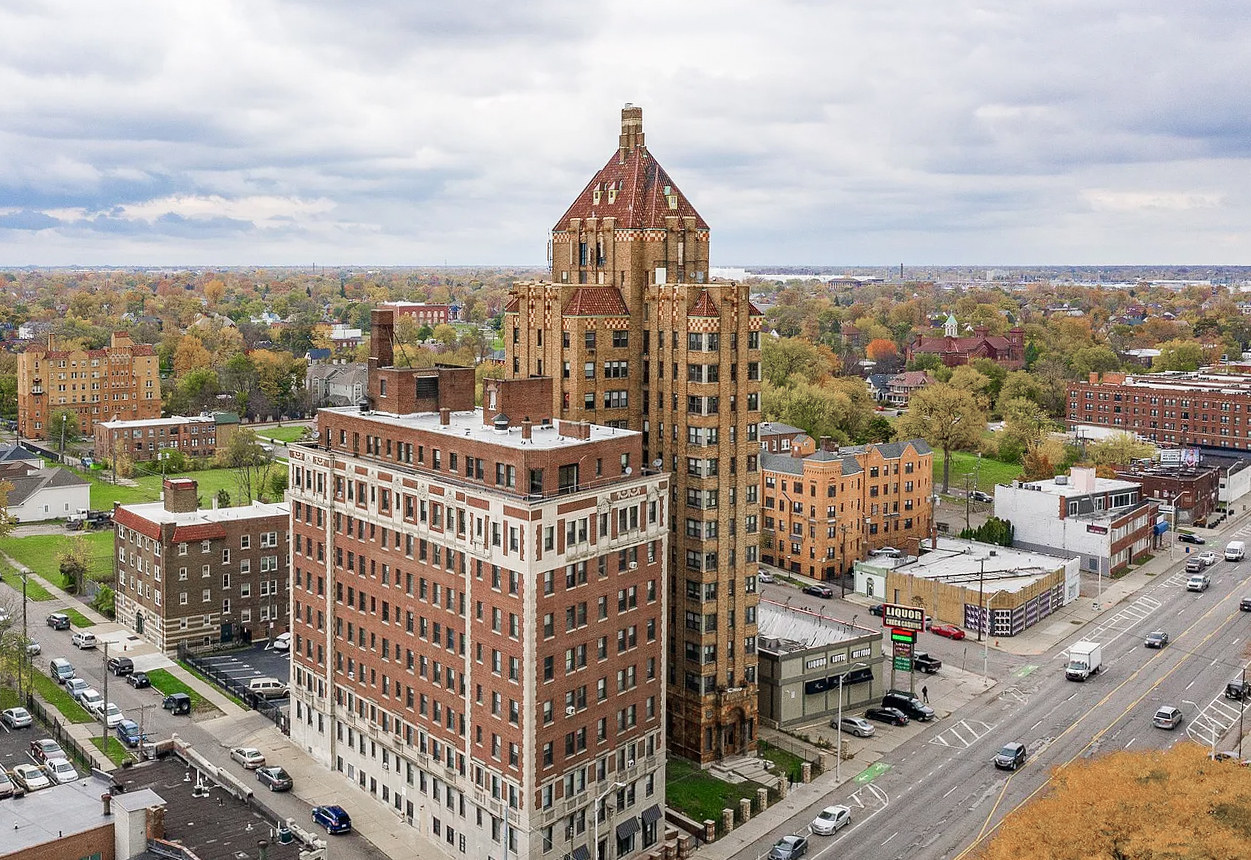The Detroit Free Press Building is an Art-deco skyscraper designed by Albert Kahn Associates, and built between 1924 and 1925, for a reported $6.00 million dollars, in Detroit, MI.
Detroit Free Press Building is not the only name you might know this building by though. Between 2020 and 0 it was also known as The Press/321.
Its precise street address is 321 W. Lafayette Boulevard, Detroit, MI. You can also find it on the map here.
The building underwent a major restoration between 2016 and 2020. The architect commissioned to undertake this restoration was Kraemer Design Group.







